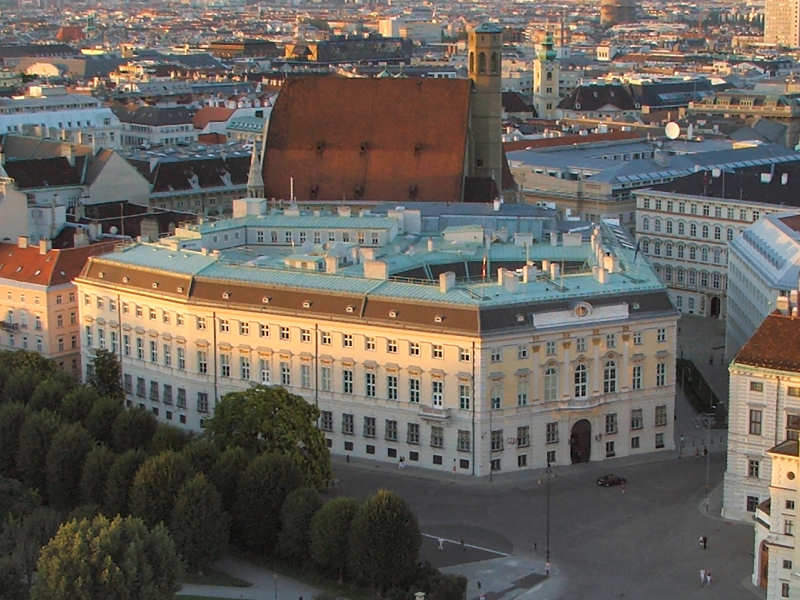Federal Chancellery

Ballhausplatz 2, 1010 Vienna
former Geheime Hof- u. Staatskanzlei and Haus-, Hof- und Staatsarchiv (690.038)
General and Historical Facts – Federal Chancellery
The founding stone for the new construction was laid on September 13th, 1717. The Baroque building was erected between 1717 and 1719, according to plans by Johann Lucas of Hildebrandt. However, it actually underwent three building phases, in which different materials were used for each. The new building was named State Chancellery and completed in the year 1721. In 1809, Clemens Wenzel Lothar, Prince of Metternich (1773–1859), moved into the building, which was also named after him. The main floor was to be used by him as living quarters and, therefore, he commissioned its modification to improve his quality of living, create better lighting and a nicer view. After the bloody revolution of 1848, Prince Felix of Schwarzenberg (who became Minister-President on November 21st, 1848) moved into the building at Ballhausplatz Square. Henceforth, Ballhausplatz Square became the main department for the Monarchy. As of 1919, it became the seat of the Federal President and the Foreign Minister and, since 1922, of the Federal Chancellery as well.
The Baroque building was severely damaged by bombing in the Second World War. The damage was repaired during the post-war period and the rooms of the Federal Chancellery re-designed by Oswald Haerdtl and Robert Obsieger. The seat of the Federal President was moved to the Leopoldine Wing due to war damage.
It has served as the seat of the federal chancellors since 1945, and for the Ministry of the Exterior since 2004. The Federal Chancellery houses one of the most famous halls, Congress Hall (Kongresssaal), where the Congress of Vienna was held in 1815. Today, the Federal Chancellor and the Vice-Chancellor use it to make their public statements. Every Tuesday, the ministerial council meets in its designated hall (Minsterratssitzungssaal), which is also situated there.
General and Historical Facts - Haus-, Hof- und Staatsarchiv (historical department of the State Archives)
The erection of the Haus-, Hof- und Staatsarchiv was commissioned by Maria Theresia (1717–1780), with the purpose of creating a secret archive, where all documents relevant to the ruling house and the State of Austria could be recorded and stored safely and permanently in the centre of Vienna.
The archive has been situated on the ground floor of the Chancellery Wing of the Imperial Palace Vienna since 1762; other locations were also part of it/also, there were other branches. In the 19th century, the archive grew massively. By 1897, Gustav Winter, the archive’s newly appointed director, was able to take the necessary steps to add a new building to it, with the help of Foreign Minister Agenor Goluchowski.
In the period from 1899 to 1902, a new cutting-edge archive building was integrated into the imperial archives (Hof- und Staatskanzlei) at Minoritenplatz Square 1 for this purpose. At present, there are more than 200 archive bodies with about 150,000 archive units and an additional 70,000 documents originating from the period between 816 and 1918. Its documentation spans the oldest surviving imperial certificate by Louis the Pious for the Archdiocese of Salzburg on February 5th, 816, through to the notarised copy of the Austrian State Treaty, signed on May 15th, 1955 in Vienna.
Occupant:
Federal Chancellery (Bundeskanzleramt)
Austrian State Archives (Haus-, Hof- und Staatsarchiv)
Burghauptmannschaft Österreich – Departments in charge:
Building Management: Dep. 404 – Ballhausplatz
HVAC: Dep. 404 – Ballhausplatz
Property Management: Dep. 201 – Administration
Telephone: Dep. 103 - Telecommunications